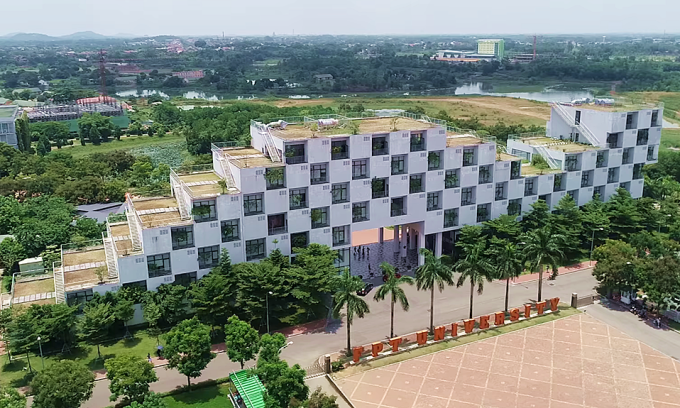10 richest universities in Vietnam revealed
As the 2024-2025 academic year begins most universities have released their financial declarations for 2023 as mandated by the Ministry of Education and Training.
The six public universities with revenues exceeding VND1 trillion were the Hanoi University of Science and Technology, University of Economics Ho Chi Minh City, National Economics University, Ton Duc Thang University in HCMC, the Industrial University of HCMC, and HCMC University of Technology under the Vietnam National University.
The Industrial University of HCMC and HCMC University of Technology were new additions to the list.
Can Tho University dropped out, with its revenues declining from nearly VND1.12 trillion to just over VND950 billion.
The private universities in the list were FPT University, Nguyen Tat Thanh University and the University of Technology HCMC (HUTECH).
Van Lang University in HCMC has not yet disclosed its revenues for 2023, which had been worth VND1.758 trillion in 2022. Tuition fees and student enrollment remained largely stable last year.
Leading the rankings was FPT University with nearly VND2.92 trillion, a 125% increase from 2021.
The Hanoi University of Science and Technology followed with VND2.14 trillion, double the previous year’s revenues.
Other universities saw more modest growth: revenues rose from VND1.06 trillion (2022) to VND1.41 trillion for the National Economics University, and from VND1.44 trillion to VND1.68 trillion for the University of Economics Ho Chi Minh City.
RMIT University Vietnam reported revenues of AUD226.2 million, a 22% increase, or VND3.8 trillion.
As a foreign-invested institution, it is regulated by the Hanoi municipal Department of Planning and Investment.
The schools’ revenues come from four main sources: government allocations; tuition and other fees; income from research and technology transfer; and other sources such as corporate sponsorships, donations, publishing, and affiliated enterprises.
Tuitions make up the largest proportion of revenue.
Of the five universities that have disclosed detailed revenue numbers, four generated over VND1 trillion solely from tuitions.
At universities like Nguyen Tat Thanh and HUTECH, they accounted for more than 98% of revenues.
Some universities reported an increase in revenues from other sources. For instance, the Hanoi University of Science and Technology’s income from research and other sources rose from VND97.4 billion in 2022 to VND506 billion.
Experts said high revenues are a positive sign for universities as they allow for development of faculty, infrastructure and other facilities, increase in staff salaries and investing in students, ultimately improving the quality of education and research.
But they expressed concern on the heavy reliance on tuitions, which continue to rise and place a financial burden on families.
Last academic year, the government approved raising the university tuition fee cap after keeping it unchanged for years due to the impact of Covid-19.
Public universities without financial autonomy can now charge between VND12-24.5 million per year, up from the previous range of VND9.8-14.3 million. Autonomous institutions may charge up to 2.5 times more. For accredited programs, universities have the authority to set their own tuition fees.
This year, university students are paying VND10.6-250 million, with the average level at VND20-40 million.
Most universities have projected annual tuition increases of 8-15%.
“This issue requires careful adjustment and regulation,” Associate Professor Tran Xuan Nhi, vice president of the Vietnam Association of Universities and Colleges, said.
Training a high-quality workforce requires investment and collaboration by multiple sources, but since diversifying revenue streams is challenging and time-consuming, he said government spending on higher education should be increased to ease the fee burden on students.
He said in countries with well-developed education systems, government funding accounts for the majority of university revenues rather than tuitions.
Over 140 of Vietnam’s 232 universities qualify for financial autonomy under the Higher Education Law.
Depending on their level of autonomy, these universities receive reduced or no government funding, meaning tuition fees comprise 50-90% of their total revenues.
In 2020 Vietnam’s spending on higher education was approximately 0.27% of GDP as against the Organization for Economic Cooperation and Development’s average of 0.93%.
In Southeast Asia, Malaysia and Singapore allocate over 1% while Thailand allocates 0.64%.


Comments are closed.